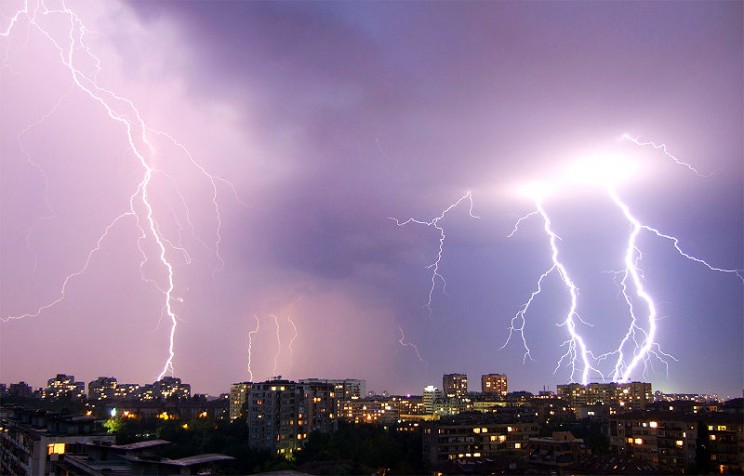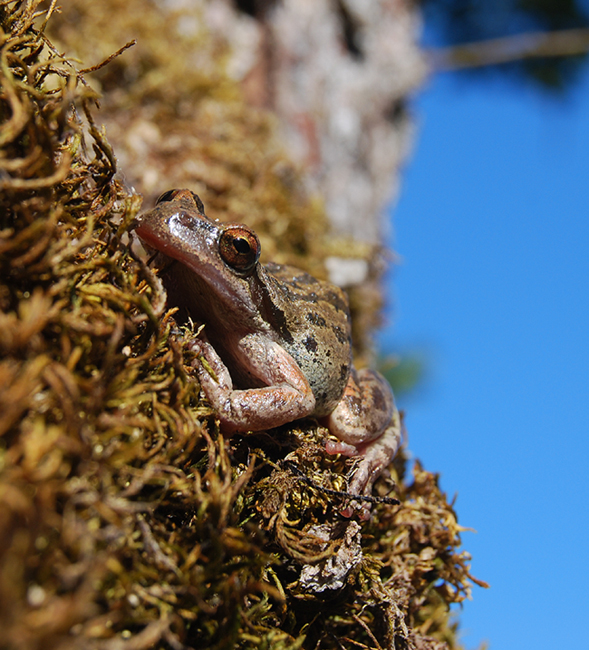By Anatoly Liberman
On 20 November 2013, I discussed the verbs astonish, astound, and stun. Whatever the value of that discussion, it had a truly wonderful picture of a stunned cat and an ironic comment by Peter Maher on the use of the word stunning. While rereading that short essay, I decided that I had not done justice to the third verb of the series (stun) and left out of discussion a few other items worthy of consideration. The interested readers may look upon this post as Part 2, a continuation of the early one.
Astonish and astound, despite the troublesome suffix -ish in the first of them and final -d in the second, are close cognates. Both go back to a Romance form reconstructed as ex-tonare. Latin tonare meant “to thunder”; tone, intone, and tonality contain the same root. To quote Ernest Weekley, “Some metaphors are easy to track. It does not require much philological knowledge to see that astonish, astound, and stun all contain the idea of ‘thunder-striking’, Vulgar Latin *ex-tonare.” (The asterisk designates an unattested form reconstructed by linguists.) Those lines saw the light in 1913. A century later “philological knowledge” has reached such a stage among the so-called general public that people’s readiness to draw any conclusions about the history of language should be taken with caution. But as regards the content, Weekley was right: the idea behind astonish ~ astound is indeed “thunderstruck.”

Thor, the thunder god (Bronzestatue „Christ or Þor“ aus dem isländischen Nationalmuseum, Photo by L3u, CC BY-SA 3.0 via Wikimedia Commons)
Weekley did not explain how a-s-toun- and thun-der are related. The hyphenation above shows that a- is a prefix. The root stoun- has a diphthong because the original vowel was long. Likewise, down, house, now, and many other words with ou (ow) had “long u” (the vowel of poo) in Middle English. The change is regular. Initial s- in stoun- is what is left of the prefix ex-; Old French already had estoner (Modern French lost even the last crumb: étonner). A Germanic correspondence of Latin t is th, as in tres ~ three, pater ~ father, and so forth; hence thunder (d has no claim to antiquity). All this is trivial. However, there are two suspicious details in our story: German staunen “to be amazed” and Engl. stun.
In my 2013 post, I followed old sources and called staunen a respectable relative of astonish and stun. However, its respectability and even relatedness to the English group has been rejected by modern scholars, so that an explanation is in order. (I am “astonished” that no one offered a correction. Usually the slightest misstep on my part—real or imaginary—arouses immediate protest.) Staunen, a verb borrowed by the Standard from Swiss German, originally meant “to stare” and has been compared with several words like stare that have nothing to do with thunder. “Stare; look dreamily” yielded, rather unexpectedly, the modern sense “to be amazed.” The recorded history of staunen “to be amazed” and erstaunen “amaze” cannot be questioned, but their etymology looks a bit strained, and I wonder whether some foreign influence could contribute to the similarity between astound and staunen.
A much thornier question concerns the history of Engl. stun. Old English had the verb stunian “crash, resound, roar; impinge; dash.” It looks like a perfect etymon of stun. Skeat thought so at the beginning of his etymological career and never changed his opinion. He compared stunian with a group of words meaning “to groan”: Icelandic stynja, Dutch stenen, German stöhnen, and their cognates elsewhere. Those are almost certainly related to thunder. Apparently, the congeners of tonare did not always denote a great amount of din.
The presence of s- in stenen and the rest is not a problem. This strange sound is like a barnacle: it attaches itself to the first consonant of numerous roots, though neither its function nor its origin has been explained in a satisfactory way. Such a good researcher as Francis A. Wood even mocked those who believed in its existence. Only a good name for this “parasite” exists (s mobile), and it has become a recognized linguistic term. S mobile disregards linguistic borders: doublets abound in the same language, as well as in closely and remotely related languages and outside it. For instance, the German for sneeze is niesen. Similar examples can be cited by the hundred.
This is not a phenomenon that happens only in old languages: in modern dialects, such doublets are also common. That is why some scholars who, in the past, tried to discover the origin of the word slang believed that they were dealing with French langue and s mobile; compare the modern jocular blend slanguage. (A convincing etymology of slang, which does not depend on s mobile, has been known for more than a hundred years, but dictionaries are unaware—fiction writers and journalists like to say blissfully unaware—of this fact.) Consequently, s-tun can be related to thunder—that is, if we recognize the existence of the capricious s mobile, an entity of the type “now you see it, now you don’t.”
However, stun “daze, render unconscious” surfaced in texts only in the early fourteenth century, while stunian “crash, etc.” does not seem to have survived into Middle English; only stonien “make a noise” has been recorded. The first edition of the OED stated cautiously that stun goes back to Old French estoner. (This word has yet to be revised for the new edition on OED Online.) The Oxford Dictionary of English Etymology gives the solution endorsed by Murray and Bradley as certain. The Century Dictionary followed Skeat but admitted confusion with the French verb that yielded astonish and astound. Other respectable sources hedge, copy from their great predecessors, and prefer to stay noncommittal.
I have returned to my old post for one reason only. In investigating the history of stun, astound, and its look-alikes, we encounter the well-known difficulty: a word resembles another word in the same or another language, and it is hard to decide where, in making a connection, we hit the nail on its proverbial head and where we are on a false tack.
In 2013, I mentioned an old hypothesis according to which stun is related to stone. This hypothesis cannot be defended: at present we have sufficient means to disprove it. (In etymology it is usually easier to show that some conclusion is untenable than that it is true.) But in two other cases we may or should hesitate. Astound and staunen are so much alike in sound and sense that rejecting their affinity unconditionally may be too hasty. The situation is even more complicated with stun. Tracing it to Old French without a footnote produces the impression that ultimate clarity has been attained, but it has not. In etymology, the door is only too often open for legitimate doubt.
Anatoly Liberman is the author of Word Origins And How We Know Them as well as An Analytic Dictionary of English Etymology: An Introduction. His column on word origins, The Oxford Etymologist, appears on the OUPblog each Wednesday. Send your etymology question to him care of [email protected]; he’ll do his best to avoid responding with “origin unknown.” Subscribe to Anatoly Liberman’s weekly etymology articles via email or RSS.
Subscribe to the OUPblog via email or RSS.
Subscribe to only language articles on the OUPblog via email or RSS.
The post There are more ways than one to be thunderstruck appeared first on OUPblog.












Oh I like that. Really fun!
great illo!!!
I love this illustration – beautiful!
I so love the artworks here. Simply beautiful!
Great work! Oh, well, what goes around comes around!
Poor bunny! You sure make being dead look festive, though. Nice.
i love this! beautiful colors and transparencies and those x’s for eyes, awesome!
i like the fact that very colorful mushrooms and a rainbow are growing out of bunny! very nice
hey! I like your style! and the colours
where are you from? i noted that you write in spanish.
yo soy de mexico!
un saludo!
oh! ya vi tu profile
me gusta al comida colombiana!